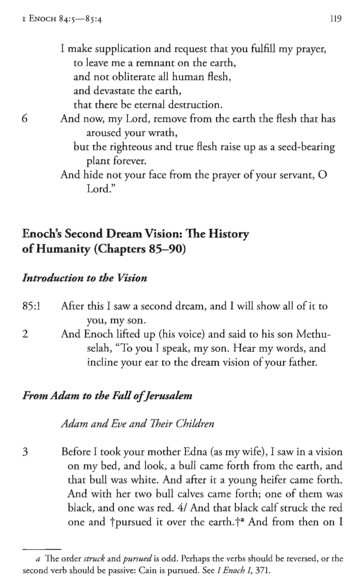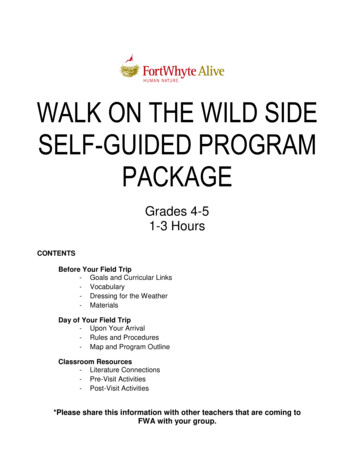
Transcription
WALK ON THE WILD SIDESELF-GUIDED PROGRAMPACKAGEGrades 4-51-3 HoursCONTENTSBefore Your Field Trip- Goals and Curricular Links- Vocabulary- Dressing for the Weather- MaterialsDay of Your Field Trip- Upon Your Arrival- Rules and Procedures- Map and Program OutlineClassroom Resources- Literature Connections- Pre-Visit Activities- Post-Visit Activities*Please share this information with other teachers that are coming toFWA with your group.
BEFORE YOUR FIELD TRIP
GOALThe goal of this program is for students to gain an understanding of how living and non-living thingsinteract in nature.OBJECTIVESStudents will:1. Understand the difference between a physical and behavioral adaptation.2. Recognize that plants and animals are adapted to their surroundings and describe examples ofthese adaptations.3. Name habitats found in Manitoba, describe their typical conditions, and give examples of animalsthat would typically be found living in these habitats.CURRICULAR LINKSGRADE45C CURRICULUMScience Cluster 1Science Cluster 4DESCRIPTIONExamine different habitatsand indentify how plants andanimals have adapted tosurvive within them.Understand that differentregions demonstratedifferent typical weatherconditions and climates.OBJECTIVES (SLO) 4-1-01, 02, 03, 04,07, 09, 10, 11, 14. 5-4-02, 16, 18
VOCABULARYBehaviouralAdaptation:A particular way that an organism acts or reacts to its environment that helps it tosurvive (ie. What an animal does to enable it to survive).Carnivore:An animal that only eats meat.Climate:The general atmospheric conditions observed in a region over a long period of time.Consumer:An organism incapable of producing its own food and must eat either other plants oranimals for survival.Food Chain:An arrangement of the organisms in a particular habitat according to the order ofpredation in which each uses the next, usually lower, member as a food source.Habitat:A spatial area where a particular species lives (plant or animal); includes food,water, air, shelter, and space.Herbivore:An animal that only eats plants.Omnivore:An animal that eats plants and animals.Organism:Any individual living thing.PhysicalAdaptation:A body structure or function that helps an organism survive (ie. What an animal hasthat enables it to survive).Producer:An organism capable of producing its own food (plants), found on the first level (orbottom) of the food chain.Weather:The atmospheric conditions at a given point in time.
DRESSING FOR THE WEATHERTo ensure that students get the most out of their FortWhyte experience, we ask that theybe appropriately dressed for a multi-hour outdoor excursion. All of our programs includetime outdoors, regardless of weather. Comfort and safety are key in making this anenjoyable and memorable experience.Suggestions for Outdoor DressLayering of clothing is very important in maintaining body temperature and in remainingdry. Four thin garments may offer the same degree of warmth as one thick overcoat, butthe four layers allow much greater flexibility. Layers can be shed or added as temperature,wind, exertion, or other variables dictate.Waterproof outer layers are also important. Rain may get us wet but so will dew on grass,melting snow on pants and puddles in the spring. Boots in the winter are always importantto keep moisture out and heat in.MATERIALSYour “Walk on the Wild Side” Kit will contain: Walk on the Wild Side bookletWalk on the Wild Side map of FortWhyteAdaptation Riddle CardsBird Beak and Feet Adaptation sheetsContainer with bird feathersInvertebrate Adaptation sheetsConnect the Elements instruction sheetConnect the Elements CardsBird and Waterfowl ID sheetFootprint ID sheetInvertebrate ID sheetsDipnetsBucketsScavenger Hunts (wetland, forest or prairie partners)Dry erase markersYou Will Need to Bring From School: Nothing for this program
DAY OF YOUR FIELD TRIPUPON YOUR ARRIVAL Upon arrival at FWA please present yourself to the Front Desk.Our receptionist will direct you to your Discovery Kit which will be ready for you to pick up in theInterpretive Centre. Your school’s name will be written on an information sheet located on or aboveyour bag(s) (see sample below). The information sheet will also indicate your building tour time, andyour lunch location and time. Please follow your schedule to avoid space/time conflicts with othergroups. Each bag contains enough materials for roughly 20 students.Please return your Discovery Kits to the same place you found them when you are finished with yourprogram.
RULES AND PROCEDURESYou can expect FWA will:- Provide a suitable venue for self-guided education programs;- Provide program equipment and materials for self-guided programming, including written educator/leaderinstructions (either online or on paper), as required for booked activities;- Advise you of your group’s schedule, lunch location, and suggested area for your self-guided program;-Advise you of any changes to environmental, weather, trail, or other conditions before your program.FWA can expect you will:- Read the provided self-guided program materials (this package) before arrival at FortWhyte Alive;- Enforce all school rules and codes of conduct, and FortWhyte Alive’s Rule of Respect (See Below), reviewing bothschool and FortWhyte Alive rules with your students before your program;- Follow FortWhyte Alive’s schedule, program guidelines, and instructions – (these have been developed with alluser groups in mind!)- Supervise all participants during self-guided programming. For independent group work (eg. orienteering), ensurestudents understand and follow boundaries, the Rule of Respect, and schedule;- Do frequent head counts throughout the day;- Check in with reception staff before your program, and advise them you are leaving at the end of your day.FortWhyte Alive’s Rule of RespectAll students, educators, group leaders, staff and volunteers are asked to:- Respect others: in their group, on the trail, in our buildings (give other groups room on trails, keep noise volumeappropriate, etc.);- Respect our place: leave nature outside, be kind to living things, clean up litter;- Respect equipment: Self-guided equipment is used by thousands of students each year; please give them thesame chance to use it that you have.Following these guidelines and rules will help us provide the best experience for every FWA visitor today! Thanks!
Legend: Walk on the Wild SideA) The Interpretive CentreB) Bird Feeding StationC) Swamp - DipnettingD) Marsh –DipnettingE) Loly Lookout
Background InformationANIMAL ADAPTATIONSANIMALDeerPHYSICAL FishBison Bees Meadow Vole Muskrats andBeavers Mink SnowshoeHare BEHAVIORALThicker fur to keep warm inwinterSkinny legs make travelingthrough snow easierWhite-tail for communicationStreamlinedCamouflagedDorsal SpinesThick fur to keep warmBroad noses for diggingthrough snowBlack and yellow stripingindicate to predators to stayawayStinger for defenseFur to keep them warmCamouflage in the browngrassesLarge ears to hear ultrasoniccalls Thick 2-layered fur to keepwarm and dryOil secretion waterproofs furWebbed feetBeaver tail communication Thick and oily fur to keepthem warm and dryPartially webbed feet forswimming in their marshyhabitatSharp teeth to catch theirpreyLarge ears give them a keensense of hearingLarge, flat, fur-covered feetfor traveling on snowIn winter has white hair forcamouflage Walk in single file to conserveenergyRest in sheltered areasSlow down to save energySchool protection frompredatorsUse nose to dig through snowfor grassStore food in the hive forwinterCluster: clump and buzz tokeep the queen warmBuild tunnels under the pukak(lower, warmer) layer of snowwhich acts as insulation andprotection from predatorsEmits ultrasonic calls tocommunicateMuskrats chew holes in ice andplug them with weeds to makedomes called push ups wherethey stop to breatheBeavers build dams to maketheir own habitatRetreat to dens in rock piles,tree roots, & logs;Hunt for food underwater aswell as on landUse their strong smelling glandexcretions to mark theirterritoriesCommunicate danger to othersby drumming with their hindfeetStays motionless when scaredto avoid being seen bypredators
CottontailRabbitTurtleFrogLynx Cottontails remain brown,reflecting their more southerndistribution where they wouldblend in with tree stumpsCamouflagedWebbed feetShell for protectionCamouflagedWebbed FeetBreathe through skinfur-covered foot pads, andclaws facilitate movementover snow and slipperysurfacesShort tail that will not drag inthe snow Eat feces as an alternativeenergy sourceDen up for very cold weatherin logs, under tree roots, etc.Bask in the sun to absorbheatHibernate in winterHibernate in winterWhen they are scared, they goto waterMales call to attract a femaleTo ensure good footing backpaws are placed exactly on thefront paw printsPrairie Partners Exhibit:Over the last 150 years, the grassland habitat in North America has been altered dramatically and manyplants and animals have not been able to adapt to the changing conditions, including the burrowing owland the black-tailed prairie dog.The burrowing owl has several unique physical and behavioral adaptations. Brown plumage withwhite spotting allows the bird to hide within its prairie habitat. Long legs allow the owl to run after preyand see over prairie grasses, as there are few natural perches in its habitat. Its beak is adapted toeating rodents and insects and its talons are adapted to catching its prey in the air.Despite its name, the burrowing owl will very rarely dig its own burrow. Instead, it inhabits burrowsthat have been abandoned by other ground dwelling animals such as prairie dogs, ground squirrels andbadgers. It collects and places animals dung at the entrance of its burrow in order to attract insects. Ifthreatened, juvenile burrowing owl will mimic the hiss of a rattlesnake in order to ward off predators.During the summer months, the burrowing owl will hunt as much during the day as it does at night.While there used to be a healthy population of burrowing owls on the Canadian prairies, they are nowan endangered species. Several factors are responsible for their decline in numbers including loss ofhabitat due to agricultural and urban expansion, reduction in prey species from pesticides and thereduced availability of burrows due to the extermination of pest species such as badgers and groundsquirrels.The black-tailed prairie dog is a type of ground squirrel native to the grasslands of North America.They have several physical adaptations which help them to survive in their habitat. Prairie dogs havedichromatic colour vision, meaning that they see in black, white and red, which allows them to detectpredators from afar. Their pale brown colour enables them to camouflage in their prairie habitat. They
have long claws for digging and their eyes and nose are high on their head, allowing them to detectpredators while exposing as little of their body as possible from their burrow.Prairie dogs are herbivorous, highly social animals living in colonies called “towns”. Members of thesame family group, or coterie, will often greet each other with a “kiss”, which helps them to recognizeone another. They live in extensive burrow systems which they line with vegetation in order to keepthem warn during the cold winter months. Prairie dogs do not hibernate. They fatten up in thesummer and fall and store food in their burrows to eat during the winter. Prairie dogs will issue a barkor a high pitched call when warning other colony members of potential danger. Grass is kept trim andearth is mounded near burrow entrances in order to be used as observation points to detect predators.Black-tailed prairie dogs are uncommon on the prairies today. The only place in Canada where theycontinue to exist in the wild is in Grasslands National Park, located in southern Saskatchewan. They arefound in only 2% of their former range from Mexico to Canada. The loss of the dogs is due to acombination of prairie habitat loss, and shooting or poisoning by ranchers who considered them a pest.Habitat DescriptionsThe following is a list of the habitats found on FortWhyte’s property. Use this information to prepareyourself and your class for your visit. Use the map provided in the visitor guide to find the habitats youwould like to focus upon during your visit.GRASSLAND: is a habitat with grass cover, lacking trees. Seasonal rainfall is unsuitable for forests,but allows for luxuriant growth of grasses. Manitoba has three types of grasslands. Short GrassPrairies have grasses shorter than knee height. Rare Tall Grass Prairies have grasses five feet and up,and Mixed Grass Prairies have grasses of varying heights. Soil conditions are ideal for grasses andsmall shrubs. These plants provide food and shelter for ground squirrels, rabbits, foxes, andbison. Bison graze on grasses which prevents species from invading. Ground squirrels and prairie dogstunnel beneath the earth, aerating the soil. Insects play a vital role in the grassland by pollinatingwildflowers.Grassland soils have three basic layers:1. The Bedrock– the deepest level of soil; consists mainly of small rocks which provide drainage andare broken down over time to form soil2. The Mineral Layer – the middle layer resembles soil in home gardens3. The Organic Layer – the top layer is composed of broken down dead grass and leaves.Animals that live here:Bison, red foxes, ground squirrels, prairie dogs, cottontail rabbits, insects, white-tailed deer, jackrabbits, wood frogs, American goldfinches, cowbirds, swallows, red-tailed hawks, northern harriers.Plants that live here:Blue-eyed grass, northern bluestem grass, saw grass, sheep’s fescue, meadow brome, wheatgrass,prairie crocus, wild licorice, yellow & purple coneflowers, dotted blazing star, prairie lily, willow tree,Canada anemone, goldenrods, wild rose, silverweed.
The grassland area at FortWhyte includes the bison enclosure and adjacent areas. Look for wildflowersincluding blue-eyed grass, Canada anemone, goldenrods, silverweed and wild rose. Watch for birdsand butterflies around this area. The bird houses along the bison enclosure are home to swallows andsparrows. Keep an eye out for soaring raptors such as red-tailed hawks, ospreys, northern harriers andperegrine falcons.From the bison viewing mound, you can see an 80-acre grassland, equipped with a watering hole, bisonmounds and rubbing stones. Bison will stand atop the mounds for wind-removal of peskyinsects. Bison rubbing stones are used in spring when the animals shed their winter coats. Thegrassland is not a native prairie – it has been planted to feed the bison in the summer. In winter, whenthe grass is less accessible, the bison’s diet is supplemented with alfalfa pellets. There areapproximately 25 bison in the enclosure ranging in age from calves, born at FortWhyte in spring, to an11 year old bull.ASPEN PARKLAND: Is a habitat with Trembling Aspen, Burr Oak, Balsam Poplar and Birch trees aswell as grasses and shrubs. This area is a transition zone between grasslands and the borealforest. Parklands are areas where trees have encroached upon grassland and over time will generallydevelop into forests.Animals that live here:Jack rabbit, white-tail deer, cottontail rabbit, red fox, groundhog (woodchuck), wood frog, grey’s treefrog, boreal chorus frog, red squirrel, grey squirrel, chipmunk, shrew, vole, songbirds, wood ducks,mergansers, woodpeckers, owls, bats, snakes.Plants that live here:Trembling aspen, burr oak, cottonwood, paper birch, balsam poplar,chokecherry tree, Saskatoon bush, red-osier dogwood, high-bush cranberry,golden rod, wild licorice, arrow-leafed coltsfoot, poison ivy, Canada anemone,prairie lily, clover, western dock, fox tail, yellow lady’s slipper, false sunflower.Most of the property is Aspen Parkland. There are many species of grasses, shrubs and wildflowersgrowing in this area. An abundance of wildlife lives in this small area, including squirrels, birds, volesand deer. The bird feeding station is an excellent place to observe the variety of animals that thrive inan aspen parkland forest.Dead and dying trees support a great diversity of life. Woodpeckers, wood ducks, mergansers,chickadees and owls nest in holes in standing snags. Red squirrels prefer a cozy tree cavity to beartheir litters. Some species of bats take shelter and hibernate in tree cavities. Dead wood and leavesalso support decomposers. These are animals, plants, bacteria, and fungi that eat dead material. Theyrecycle forest resources into soil. Without these decomposers, the forest would quickly fill up withfallen trees and leaves.
AQUATIC/LAKE SHORE: is a habitat surrounding a body of fresh water over 2 meters deep. Lakesare home to crayfish, snails, aquatic insects and insect larvae, as well as several fish species. Theseaquatic animals provide food for birds of prey and shorebirds such as sandpipers, gulls, and herons.Animals that live here:Eagles, northern harriers, osprey, gulls, grebes, great blue herons, pelicans, cormorants, red-wingedblackbirds, canada geese and many different species of duck, aquatic invertebrates, crayfish, beavers,muskrats, otters, raccoons, western painted turtles, salamanders, frogs, , northern pike, walleye,channel catfish, yellow perch.The lakes at FWA are an ideal habitat for aquatic life. Perch, walleye, northern pike (jack fish), channelcatfish and carp live in the four lakes. There are also minnows in the marsh, swamp and ponds. Thetwo aquariums at FortWhyte contain a sampling of Manitoba's 84 species of freshwater fish. The actualspecies may vary.Fish are the largest group of vertebrates. Some use a swim bladder to control their buoyancy. Fishscales grow by adding rings around the outside. These rings can be used to determine the age of thefish. A fish has smooth scales and a covering of mucus over the entire body helping it move throughwater. The mucus layer also protects the fish from parasites. Steering and balance are controlled byfins; the size and shape of which help to identify species. In winter, fish remain active. However, beingcold-blooded, the colder temperature of their surroundings slows down their activity. Their feeding maydecrease substantially.Fish Characteristics:1. Fish are cold-blooded vertebrates.2. They are purely aquatic, using gills to breathe.3. Most fish have scales; a few have lost their scales entirely.4. Fish have fins rather than limbs.5. Fish lay eggs.WETLAND: a wetland is a shallow depression in the land covered with slow-moving or stagnant water(no deeper than two metres) for all or part of the year. The water has an abundance of aquatic plantssuch as cattails, willows and duckweed in addition to aquatic insects. Wetlands include swamps,marshes, bogs, ponds, ditches, and puddles. Water in wetlands is slowed down by aquaticplants. Sediment settles and eventually the water leaves the wetland cleaner than it whenentered. Wetlands provide habitat for nesting waterfowl and songbirds as well as amphibians andreptiles.Animals that live here:Aquatic insects, leeches, snails, beavers, moose, coots, muskrats, tadpoles, frogs, waterfowl includingducks and geese, otters, western painted turtles, red-winged black birds, yellow-headed black birds.Plants that live here:Bladderwort, hornwort, willow, cattail, marsh marigold, duck weed, sedges, rushes, silverweed.
All wetlands at FortWhyte Alive were designed and constructed by FortWhyte, on a reclaimed industrialsite. The wetlands are connected to one another and the water flows from them into thelakes. Examples of wetlands found on the property include swamps, marshes, ponds andpuddles. Marshes and swamps are very productive habitats, and are second only to rainforests in termsof biodiversity. Wetland biodiversity is so rich, in part, because of the vast number of waterfowl speciesthe habitat supports.Ducks can be divided into two groups: Divers - Canvasbacks, Redheads, Scaups, Goldeneyes andBuffleheads are included in this group. Their legs are further back on the body to facilitate diving. Theyfeed on plants and invertebrates deeper in the water, further from the shore. To take off, they mustpatter across the water to gain momentum and lift. Dabblers - Mallards, Wood Ducks, Gadwalls,Widgeons, Teals and Pintails belong to this group. Their legs are in the centre of their body. To feed,they tip upside down, with their behinds sticking up. They forage close to shore in shallowwater. Unlike divers, they can take off simply by jumping upwards.Wetland soil contains very little oxygen. Millions of different bacteria live in wetlands, feeding on thewaste left by animals and plants, as well as each other. These organisms cannot always find enoughoxygen to breathe, so some breathe sulfates. The waste sulfides they "exhale" can produce a rottenegg smell.
CLASSROOM RESOURCESLITERATURE CONNECTIONSAll of the books listed below relate to the theme of adaptations, are recommended for upperelementary children, and are available through the Winnipeg Public Libraries and/or the ManitobaEducation Instructional Resources Library. You may wish to make these titles available in yourclassroom surrounding your ‘Walk on the Wild Side’ field trip.Books and activities with an Aboriginal perspective are indicated with a medicine wheel.Fiction How the Fox Got His Crossed Legs by Virginia Football How the Bees Got Their Stingers by Mary Lou Fox How Turtle Got its Shell by Joseph McLellanJust So Stories by Rudyard KiplingChameleon’s Colours by Chisato TashiroAnimorphs series by K.A. ApplegateWhat Mr. Darwin Saw by Mick Manning and Brita GranstromSong of the Water Boatman by Joyce SidmanNon-Fiction What Do You Do With a Tail Like This?, What Do You Do When Something Wants to EatYou?, and Eye to Eye: How Animals See the World by Steve JenkinsAmazing Animal Adaptations (series) by Julie Murphy and/or Lisa J. AmstutzA Seed is Sleepy by Dianna Hutts AstonThe Dandelion Seed and In a Nutshell by Joseph AnthonyClaws, Coats and Camouflage by Susan GoodmanFur, Feathers and Flippers: How Animals Live Where They Do by Patricia LauberEvolve or Die (Horrible Science Series) by Phil Gates and Tony De SaullesAnimals Charles Darwin Saw by Sandra Markle and Zina SaundersNature’s Yucky by Lee Ann Landstrom
PRE-VISIT ACTIVITIESHABITAT LAP SIT (1 lesson)ScienceIn the program Adapt or Die, students will explore how animals adapt to their environments orhabitats. A habitat includes five crucial elements for plants and animals alike—food, water,shelter, air, and space (sunlight may also be included for plants). In this quick game studentswill see how all five parts are necessary for a strong and healthy habitat.Have your class stand in a circle and number off students by fives as “food”, “water”, “shelter”,“air”, and “space”. Have students all turn to face along the circle (front to back) and tighten thecircle up until everyone is almost touching. On the count of three have everyone sit on the lapof the person behind them. Practice a few times to represent a healthy, balanced habitat.Next, have everyone sit down but ask those in one particular category (e.g. “space”) to removethemselves. The circle will quickly topple. Repeat with other groups and discuss how livingthings cannot survive in a habitat unless it has all five components.*Modified from Project WILD foreducators/project-wild.html)FANTASTIC FOOD CHAINS (1-2 lessons)ScienceAsk your students to come up with their own three-level food chain (minimum). Start with aproducer. As a group, try to connect all of the food chains into a food web. What are theplants in this food chain called (producers)? What are the animals called (consumers)?Remember, all the food chains will share the fact that plants produce their own food by usingthe sun’s energy.
CRITTER CREATION (1-2 lessons)Science/Visual ArtReview the concepts of physical and behavioural adaptations (Grade 4, Cluster 1) and havestudents design imaginary critters and describe how they are adapted to survive in theirenvironment. Students may design an imaginary environment to suit their critters (e.g. a planetwhere the ground is made of Jello or where volcanoes constantly fill the air with smoke).Alternatively, they can use the habitat cards provided (Attachment #4) to create critters thatmust adapt to more realistic environments such as a marsh, desert, or stream. Invent someenemies for your critter. Adapt them to overcome the defenses of the critter. Repeat for thefood organisms (plants or animals). Adapt them to be able to avoid being eaten by your critter.Develop a whole alien ecosystem. Be sure to include biotic and abiotic parts of your ecosystem.Create producers, consumers and decomposers in each ecosystem. This activity indirectlyillustrates how closely linked animals are to other organisms and their surroundings. You maywish to use various art media to paint, draw, model or sculpt the beasts. Be sure to let theFortWhyte Alive know how you do. We would love to see how creative you can be!Language Arts Extension: Now that your critters/ecosystems have been designed andrepresented, write about a day in the life of the creatures, create a critter journal that highlightsspecial adaptations and environmental hazards from the critters’ perspectives, or put together aclass field guide that includes a page for each critter and/or ecosystem.The book Diary of a Fly by Doreen Cronin is a good model text for perspective writing.
POST-VISIT ACTIVITIESHABITAT HIERARCHIES (4 lessons or more)Science/Social StudiesNow that students are familiar with the concept of a habitat, investigate different types ofhabitats around the world, in Canada, in Manitoba, and locally.World BiomesOn a map of the world, identify different regions. Where on our planet is warmest? Coldest?Most dry? Most wet? Do all countries on a continent have similar habitats? Use a World BiomesMap (Attachment #1), to locate some of the most common natural regions in the world.Students might cut out photographs from magazines or calendars to illustrate generalcharacteristics of the different biomes. Which are similar to those found in Canada? Which arenot?Regions of CanadaCanada’s six basic regions are: Canadian Shield (also sometimes referred to as Boreal Forest),Western Cordillera, St. Lawrence-Great Lakes Lowlands, Arctic Region (also known as the FarNorth), Atlantic Region (also known as Appalachian Region), and Prairie Region (also known asGreat Plains or Interior Plains).Use a map of Canada’s regions (Attachment #2) to locate these six regions. Depending onhow much time you have, this could become many lessons in itself. Laminated calendar pagesmake great examples of various regions. Students might make dioramas using naturalmaterials collected outdoors, paintings, poems, or research projects to learn more about theplants and animals that live in each region. At the very least, have students map out the regionsand note the differences that occur north to south and east to west. What causes thesechanges? Answers include geology/soil, climate, and topography.Extension Ideas: Locate a National Park in each of Canada’s regions and use the Parks Canada website toresearch plants and animals that are adapted to and protected within that particular region. Goto http://www.pc.gc.ca/eng/progs/pn-np/index.aspx Explore the concept of a keystone species. A keystone species is a plant or animal that has anespecially big impact on its ecosystem. Without keystone species an ecosystem would bedramatically changed or cease to exist.Examples of keystone species in Canada’s six regions include:o Canadian Shield – Spruceo Arctic Region—Arctic Foxo Western Cordillera—Salmono Appalachian Region—Lobstero Prairies—Prairie Dogo St. Lawrence-Great Lakes Lowlands—Sugar MapleResearch these and other keystone species to identify why they are so important to theirecosystems. Who eats them and who do they eat in the food chain? Do other species rely onthem for shelter?
Go to encyclopedia/keystone-species/?ar a 1Create a mural of one of Canada’s regions. Assign each student a specific plant or animal toresearch and have students work collaboratively with paints or other media to bring the habitatto life in detail.Habitats of Manitoba:If we zoom in on just the province of Manitoba we see that there are two major Canadian regionsincluded in our province—Prairie and Canadian Shield (Boreal Forest). But there are also some moredetailed regions. One of these is the transition zone between Prairie and Boreal Forest known as theParkland Region. This habitat is characterized by a mix of prairie grassland and stands of trees,primarily Aspen. The city of Winnipeg and FortWhyte Alive are both located within the ParklandRegion.See Attachment #3 for a detailed map of Manitoba’s ecological regions. Research the plants andanimals that live in Manitoba. What are their special physical and behavioural adaptations? Theanimals you saw in the Touch Museum and on FortWhyte’s property are a good starting place forinquiry.Local Habitats:OUTDOOROn the smallest scale, we all live and go to school within local habitats. Go outsideLEARNINGwith your class and find evidence of the animals that live in your neighborhood—tracks, scat, chewed leaves, spiderwebs, nests, and holes are all great startingpoints. Start a list of plants and animals you would like to know more about and createa class field guide to your schoolyard/neighborhood. Look at examples of field guides and don’t forgetto include a sketch or photo, special adaptations, and a site map that shows where this organism mightbe found locally. Add to this project throughout the year!CAMOUFLAGE GAME (Movement Break)Science/Physical EducationOUTDOORIn this game students will a
1. Understand the difference between a physical and behavioral adaptation. 2. Recognize that plants and animals are adapted to their surroundings and describe examples of these adaptations. 3. Name habitats found in Manitoba, describe their typical conditions, and give examples of animals that would typically be found living in these habitats.



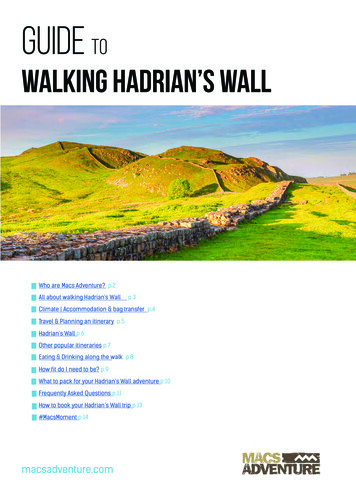
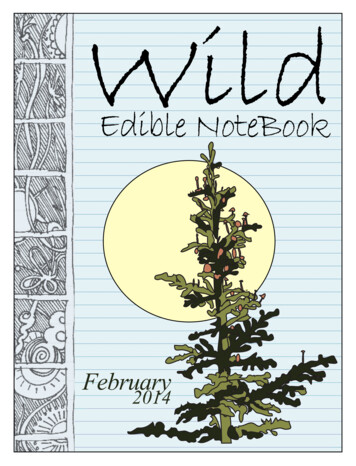


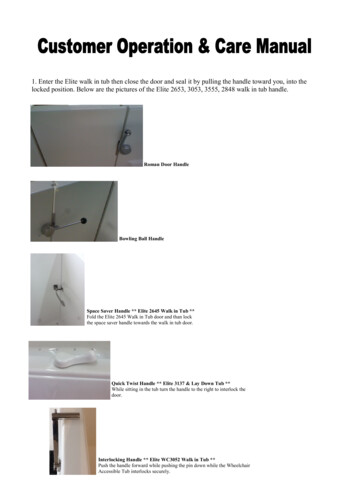
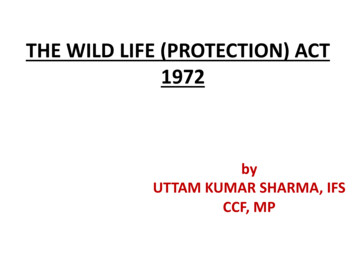
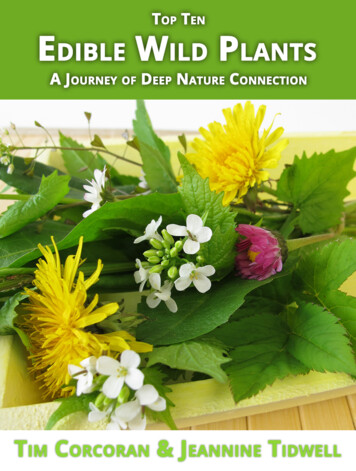
![INDEX [randycherry ]](/img/21/x-20-20tv-20fakebook-20-20hal-20leonard.jpg)
